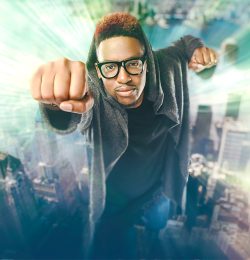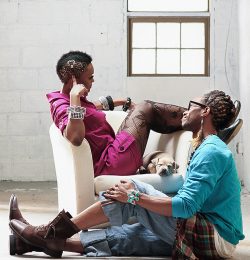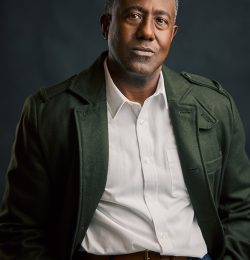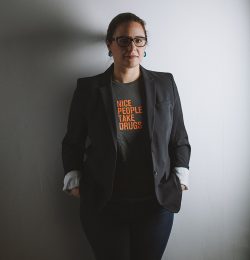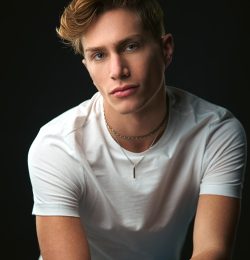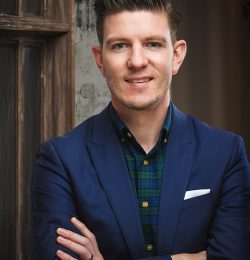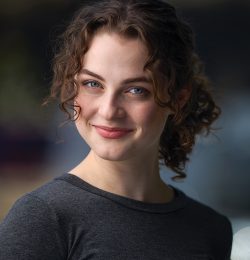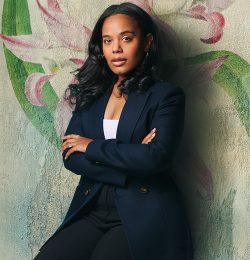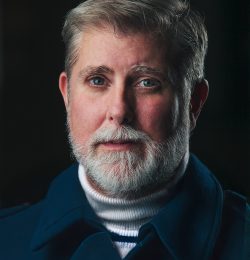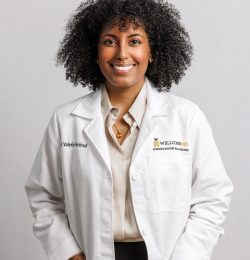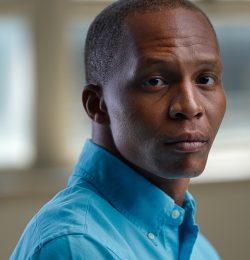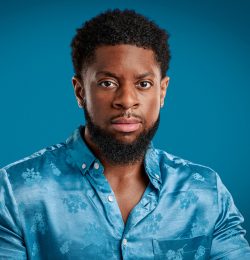EDITORIAL AND PORTRAIT PHOTOGRAPHY
Editorial and portrait photography is meant to communicate your personality, energy, brand or story to your audience.
ABOUT EDITORIAL AND PORTRAIT PHOTOGRAPHY
An editorial or portrait session takes the typical headshot a step further, aiming to communicate your personality, energy, brand, or story to your audience. Portraits can be done in-studio or on location, depending on the scope of your project. Sometimes, capturing the environment or typical surroundings of an individual best suits a particular project. Other times, a simple studio backdrop works best. Because of the nature of these sessions, pricing is highly project-dependent. Please contact us for details about editorial and portrait headshot photography in Atlanta, GA.
The following features are included with every package:
CHOICE OF LOCATION
Choose to hold your potrait or editorial headshot session in studio or on location.
ON SITE OR GALLERY PROOFING
Choose to proof and select your photos on-site, or after the session via an online image gallery.
TOP-NOTCH PHOTOGRAPHY
All photography is done by our owner, a pro photographer with 20 years of experience coaching and photographing people of all shades, shapes and sizes.
CUSTOM RETOUCHING
Every package includes in-house professional retouching—acne or annoying blemishes, extra weight added by the lights or camera, are all taken care of after the shoot.
THE ART OF THE PORTRAIT
There is definitely an art to taking great portraits. The process has some similarities and some differences to the standard headshot. I’ll mention a few things and then a bit about what you can do to help us get there.
Like with headshots, it’s important to know that a big part of my job is to create a relaxed, laid-back, yet professional environment for your session. I understand that some folks have a hard time in front of a camera. Just leave it to me, and I’ll walk you through the process step by step. I’ll talk more about this later.
A great portrait should be dynamic, honest, and composed in a visually pleasing way. It should be well-lit, with the focus on the face—more specifically, the eyes.
By dynamic, I mean some contradiction in angles. This is often subtle. In fact, most of the time, anything more than subtle can look forced or superficial.
By honest, I mean the gaze into the camera looks engaged and real. The opposite would be the “deer in headlights” look we’re all familiar with.
By composed in a pleasing way, I mean the image should draw the viewer’s eye to the most important element—the face, especially the eyes.
The background or wardrobe should complement your face or enviroment and never distract from the main focus of the image. Lighting needs to be appropriate for the mood or message you’re trying to convey. There are ways to light an image to feel bright and cheerful—like a sitcom—and ways to light it for a more refined, professional feel.
When you combine all these elements successfully, you end up with a great portrait.
OK, so how do we get there?
It really comes down to a few things:
Communicate what you hope to achieve as clearly as possible, follow some basic guidelines, and be open to simple direction.
Basic Guidelines
Hair
You can hire a stylist or take care of this yourself. There are benefits to hiring a stylist, but it can be expensive. I can either recommend a stylist or help arrange one for you if you’d like. If you’d like to take care of it yourself, you can style your hair the way you normally would. If you have a specific look that requires a stylist, consider seeing your regular stylist before the session. Flyaways, small gaps, or subtle adjustments can be handled during the shoot or in post-processing without a stylist.
Makeup
Applying makeup as you normally would is totally fine. However, there is a benefit to having a dedicated makeup artist on set.
Wardrobe
If you’re unsure, just ask—I’m more than happy to help. It’s not as complicated as one might think. Simple is best. Typically, your wardrobe shouldn’t draw attention away from your face. At most, it should subtly complement it, often through color.
Wardrobe completely depends on the nature and scope of the project. For a simple, safe option, a solid-colored top that flatters your eyes always works. Avoid low necklines and busy patterns. Color is fine, but I recommend bringing a more neutral backup option, just in case.
Avoid overthinking or overplanning. Yes, looking your best is important—hire a stylist or style your hair as you normally would, apply basic makeup—but don’t obsess. Most blemishes and hair issues can be fixed on the fly. A stressed-out subject, constantly worrying about the details, is much harder to “fix” than a stray hair.
What do I mean by take very simple direction?
First of all—you don’t need to know how to “pose.” In fact, posing often does more harm than good.
When I say take very simple direction, I mean that I’ll guide you through every step of the process using small adjustments to your natural sitting or standing posture. If you’re experienced and prefer to pose yourself, that’s perfectly fine—I won’t get in your way. But generally, it works like this:
You sit or stand in whatever position feels natural and comfortable. I take a few test shots. Then, I give you some posture suggestions—usually minor tweaks that enhance your look for the camera. For example:
- Shift your weight forward or back
- Straighten your upper body
- Relax or pull back your shoulders
- Turn your head slightly
- Adjust your chin or gaze
Once we’ve established a good posture, I’ll work with you on expression. My goal here is to help you engage with the camera.
Again, if you already know how you want to express yourself, go for it. If I think we should adjust something for the camera, I’ll let you know. I also have a few simple techniques to help clients achieve a fresh, engaged expression.
PORTRAIT/EDITORIAL Prices & Packages
Because of the nature of these sessions, pricing is highly project dependent. Please contact us for details.
CK Headshots also offers three basic packages for corporate headshots. Please contact us if you have any questions.
PLEASE NOTE: 50% deposit/retainer fee required upon booking to reserve your date and time. The remaining balance is due after you approve your final retouched images. The rates listed on this page are for non-commercial shoots. If you need a shoot with commercial image licensing please contact for details.
For complex portraits requiring sets, props, heavy retouching or compositing please contact for details.
Turn Around Time: After the shoot, a gallery link to the untouched photos is emailed to you within 2-3 days for review and to make selects for retouching. The final retouched images may take up to 1 to 2 weeks to be delivered via download. Images can be rushed for an additional fee.
Rates do not include travel expenses for shoots outside of the Atlanta metro area. Any taxes, fees, etc. are calculated on your itemized invoice. Deposits are non-refundable. If you need to cancel for any reason, CK Headshots reserves the right to make rescheduling decisions on a case to case basis. Deposits and final payments can be made through our invoice system. After reviewing your final retouched photos, the remaining balance must be paid to receive your download link. Clients under 18 must have a parent or legal guardian present at all times.
FAQs
Yes and no. How to pose for a headshot is a headshot photography related phrase often searched on google. And the answer is really not all that complicated. Simply because most of what you’ll be required to do, other than stand or sit naturally, is up to me to walk you through. And even then not all that much needs to be done. A few tweaks here and there to your natural posture is often all it takes. A good photographer is in part almost always thinking in terms of composition. It’s up to the photographer to establish the group of angles necessary to serve the end goal. So yes you have to do a little bit of what one may call posing, but no you don’t have to figure any of it out yourself. If you’re more interested in this I have a whole article about it in my blog.
Headshot vs portrait, what’s the difference? Sometimes not much to be honest. In fact I often find myself letting the one bleed into the other. However the term headshot usually suggests a certain utilitarian kind of end use. Along with this comes a certain standard or set of criteria that needs to be met to fit within a particular business or industry mold. Fort example an industry standard actors headshot needs to meet the expectations of a casting director, agent or other professional in the entertainment industry. This typically means mostly head and very little body, a gaze right into the camera, no hands on the face or excess when it comes to wardrobe and styling. Business headshots often require specifications that match existing content or other headshots. A portrait on the other hand, at least to me, suggest capturing an essence. Aristotle said “The aim of art is to represent not the outward appearance of things, but their inward significance”. I think that quote succinctly sums up what a good portrait is all about.
The easy short answer to this is a good photographer makes a good headshot or portrait. That might sound a little flippant but the point is true — you pay me to make a photo, all you really need to do is cooperate with what it takes to achieve that end goal. And honestly, it doesn’t take all that much on your part. There are a few things you can do leading up to the session that can help, e.g., try and get good sleep, etc., but I wouldn’t stress about these things too much. There’s very little that can’t be coached or corrected. You can view my tips on how to prepare to learn more about this. Outside of the collaborative process between photographer and client there are certainly a few aesthetic qualities that make a headshot or portrait most effective. Although there are differences between headshots and portraits the following applies to both. A good headshot or portrait is dynamic. Just like any other art form, a powerful photograph almost always has a dynamic quality. In headshot terms that might mean the head turned subtly one way while the shoulders are angled another. It might mean creating negative space between an arm and the body or something as simple as shifting the head one way and the eyes another. Lighting can also provide a dynamic quality. Sometimes I’ll shoot subjects straight on, almost perfectly symmetrical and let the lighting and design add in the dynamics. A good headshot or portrait is honest. There’s something I call the honest gaze. This is a feeling of genuineness portrayed by the look or gaze of the subject being photographed. This does not mean intense, or confident or anything else. It means genuine. If your look is genuine, it’s going to by nature also be confident and powerful. A genuine or honest look is usually simply you un impeded by the present circumstances of being in front of a camera. Does that mean you can’t be nervous, well no. It means you need a good photographer to read between the lines, determine your baseline and do what’s necessary to capture it.
The first and most important thing is to remember that I’m here to guide you through the whole process. Most people tell me they don’t like having their photos taken. Including myself! I expect that, and do everything I can to make it an easy, fully guided process. Second: Communication is key. Let me know what it is you’re trying to achieve. If you see photos on-line that inspire you, send them over. If there’s a particular mood you’re going for, let me know. If you’re undecided about wardrobe, etc., run it by me. Try to get good sleep the night before the shoot. But, with exception to extreme cases, you don’t need to cancel if you don’t—most of the signs of a poor nights sleep can be edited out. Just be aware that you might need to compensate for your tiredness. But again, I will guide you through. With respect to hair and make-up the vast majority of my clients choose to do their own. If you’d like to have an artist do it for you on site, you can arrange it yourself or, we can help you arrange it at an additional fee. If you’re looking for some make-up basics, check out this article. For some basic on how to prepare including hair, make-up and wardrobe tips, you can view my blog post.







